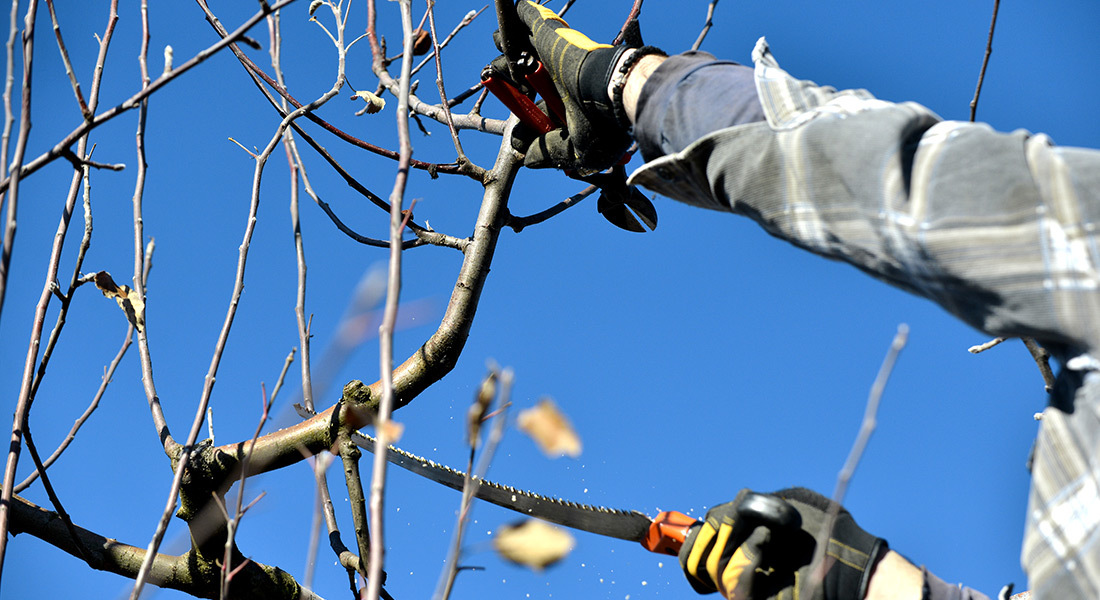What gardening chores should I focus on in February?

February marks the last full month of winter, with spring and the southern Oregon growing season just a few weeks away. In preparation, here are some garden chores to check off the list for February.
- Prep your tools — If you haven’t done so already, now’s the time to tune-up your lawn mower, clean your garden equipment and sharpen your tools before the busy growing season begins.
- Prune your fruit trees — In order to give yourself a bounty of fresh fruit later in the year, prune your trees now and take care of any damage from the winter. A little care now will pay dividends down the road.
- Consider creating an herb bed — Planting an herb bed not only gives you an amazing array of beautiful plants to look at, but it can also provide fresh ingredients for your favorite kitchen dishes. If you’re considering growing an herb bed, February is a perfect time to map out what you’d like to grow and where the bed will go. Types of herbs are plentiful, running the gamut from basil, chives, coriander and dill to fennel, French tarragon, oregano, parsley, sage, rosemary and thyme. Nothing beats being able to walk outside your kitchen door during meal prep and snip a few sprigs of fresh, home-grown herbs.
- Deal with gophers and moles — We’ve all seen those pesky dirt mounds in our yards — a sure sign that moles or gophers have set up shop. Control using traps or baits is most successful when new mounds begin appearing, often around this time of year. There are all kinds of natural deterrents to help send them off and keep them from coming back. Growing plants with strong scents, such as thyme, sage, geranium and daffodil will repel them. Ditto for placing peppermint oil, coffee grounds or fish oil on the ground near their tunnels. For a homemade remedy, castor oil is the go-to ingredient. Mix three-part castor oil and one part dish soap. Add four tablespoons of the mixture to a gallon of water, then soak the tunnels to get rid of these garden-digging pests.
- Give your landscape a good once-over — Knowing that spring is on the horizon, take some time to walk around your yard and check out the plants. Look for any signs of damage, pests or anything else that might need to be addressed. If you find problem areas, treat accordingly and make sure your yard is in good shape before the growing season hits.
- Plant fruit trees and deciduous shrubs — It’s a good time to plant fruit trees in your yard. The time is right for planting deciduous shrubs too. And consider replacing any ornamental plants that are susceptible to disease with disease-resistant varieties.
- Say yes to peas — One of the earliest crops you can plant is peas. When the soil is dry and workable enough, you can plant both garden peas and sweet peas. The types and varieties are plentiful, including Oregon Sugar Pod, Sugar Snap, Corvallis, Green Arrow, Dark Green Perfection, Snappy, Knight and Oregon Trail.
- Use your greenhouse — If you have a greenhouse, you can begin planting crops indoors now. Once they have a chance to grow a bit — and the soil has a chance to warm up — these crops can be transplanted to your garden. February is a perfect time for starting the cooler weather cole crops, including broccoli, Brussels sprouts, cabbage and cauliflower.
- Or build a cold frame — If you don’t have a greenhouse, consider building a cold frame — a transparent outdoor frame that protects plants from cold weather while still letting sunlight in. Cold frames are typically low-to-the-ground, bottomless boxes that are set over plants in the garden to protect them from cold weather. These simple structures can be used to grow crops for an early harvest in spring or a later harvest in the fall.
- Take care of your grapes — With more and more people growing grapes — especially here in southern Oregon — February is a good time to prune and train grapes, as well as to make cuttings.
Share This
